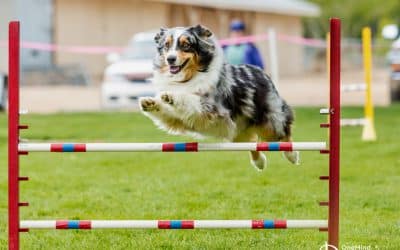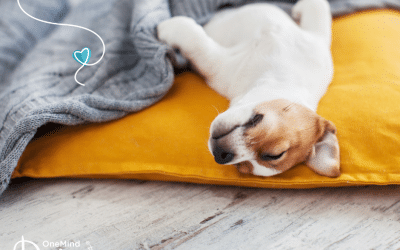To be able to enjoy doing agility with your dog for as long as possible, it’s important that you take care of your team mate’s physical well-being every day — training days, competition days and rest days!
We heard from OneMind Dogs Coach and Veterinarian, Minna Martimo, about what habits you can build to keep your agility dog healthy and happy throughout their agility career, and in general life too.
Vet Minna’s tips for taking care of an agility dog’s physique
Warm ups and cool downs are essential
Make sure you follow appropriate warm up, cool down and hydration procedures for your agility dog depending on the weather. Warming up is particularly important in cold weather climate like ours here in Finland! (If you’re a Premium member, check out this new article on warmups!)
Know your dog
Keep track of how your dog behaves and moves (trots, canters, gallops, sits down, lies down, gets up from lying down, jumps or turns). Examine your dog thoroughly with your hands on a regular basis. This way you can notice problems early on. Trust yourself if you feel something is “off” and seek professional help if necessary.
Healthy weight, healthy dog
Your agility dog needs to be in good physical condition and not obese. Dogs’ primary moving muscles and stabilizer muscles both need to be strong and flexible.
Seek professional help proactively
Take care of your dog’s physical health regularly with treatments such as physiotherapy, osteopathy, acupuncture and/or massage. It is better to prevent problems from arising by being proactive than letting them pile on and treating them as they become problematic.
Grooming isn’t just for show dogs
Trim your dog’s nails regularly and have his anal glands checked if necessary. Nail length has an impact on the foot conformation and gait of the dog — so keeping them trimmed is important.
Be reasonable with how much you train
Learning shouldn’t involve many repetitions when correct methods are used. The handler can also learn a lot without involving the dog — that’s when our ‘virtual dog’ comes in handy!
Remember that just like us humans, dogs also need days off from ‘work’ (hobbies and intense exercise)!
Making small changes to your routines with your agility dog can have positive benefits that will compound throughout their life — keeping them happier, healthier, and able to play agility until their senior years!
Minna Martimo is an agility enthusiast and OneMind Dogs coach from Northern Finland, where she also works as a regional vet. Minna started with agility in 2000 and has been working as a vet since 2003 with both companion and farm animals. She trains consistently with OneMind Dogs Leading Coaches Janita & Jaakko with her dogs, Bang, Colt, Shotti and Pow.



